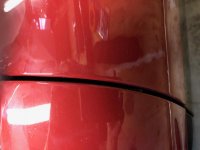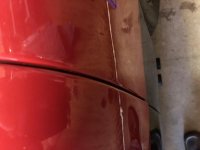bighealeysource
Luke Skywalker
Offline
Hey gang,
Haven't posted for some time but been out here lurking and reading ! But, thinking about trying to get a better adjustment on the driver door on my 56 100M. It is off on the latch side and I know I should adhere to my policy of "if it ain't broke don't fix it" but been bothering me for years. So, figured a nice winter project since know it will take a while. Do have a buddy who will help me as last time I tried this on a BN6 did it by myself and about committed hari kari by the time I was done. SO .... any suggestions on how best to proceed ? Tricks of the trade, etc ? When I say it is off on the latch side I mean the gap is not equal , perhaps off by a 1/16 of an inch if that much. Swage lines are perfect.
Thanks,
Mike
Haven't posted for some time but been out here lurking and reading ! But, thinking about trying to get a better adjustment on the driver door on my 56 100M. It is off on the latch side and I know I should adhere to my policy of "if it ain't broke don't fix it" but been bothering me for years. So, figured a nice winter project since know it will take a while. Do have a buddy who will help me as last time I tried this on a BN6 did it by myself and about committed hari kari by the time I was done. SO .... any suggestions on how best to proceed ? Tricks of the trade, etc ? When I say it is off on the latch side I mean the gap is not equal , perhaps off by a 1/16 of an inch if that much. Swage lines are perfect.
Thanks,
Mike

 Hi Guest!
Hi Guest!

 smilie in place of the real @
smilie in place of the real @
 Pretty Please - add it to our Events forum(s) and add to the calendar! >>
Pretty Please - add it to our Events forum(s) and add to the calendar! >> 




